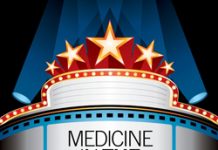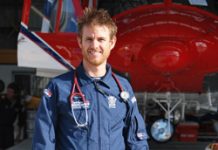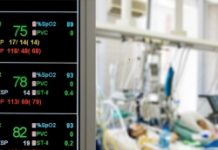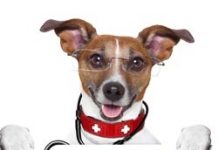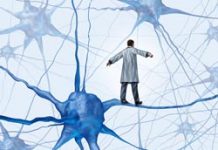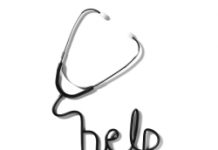 Few of us would attempt to prepare for an exam without practising past papers or leafing through revision resources. For some of us, relishing the smallest book we can find that gives us all the information we need as concisely as possible while time is at a premium, revision resources as primary learning resources are quite appealing.
Few of us would attempt to prepare for an exam without practising past papers or leafing through revision resources. For some of us, relishing the smallest book we can find that gives us all the information we need as concisely as possible while time is at a premium, revision resources as primary learning resources are quite appealing.
They are concise, clearly relevant – since many are based on past exams, and we hope, factually correct and up-to-date. In this article we look at the evolution of revision materials and ponder the questions “should we be using these routinely for primary learning? Can they be adapted for learning from first principles? “
Exams test the attainment of standards in knowledge, understanding and application. Increasingly, however, in the modern clinical environment, assessment is of what is supposed to have been learned rather than what may actually have been taught1-3. Self-directed learning is increasingly favoured in modern undergraduate education4-7 while traditional undergraduate teaching was largely didactic and lecture based in the preclinical years and a clerkship on the wards in the clinical years7-9. Student numbers were small enough for teaching ward rounds to be common place and students to be an integral part of the firm. It was accepted that time spent on the ward was time spent learning clinical medicine.
On the other hand, traditional models of postgraduate training were largely self-directed, involved apprenticeship, personal reading with critical appraisal of the literature, research and membership or fellowship examinations early on in the registrar years.
What has changed is an increase in the number of undergraduate students and the evolution of undergraduate curricula distilled to essential core factual knowledge with less face-to-face teaching10-12. Inevitably, compounded by changes in emphasis on time spent in the laboratory, the dissecting room and on the wards, undergraduates receive less one-on-one practical teaching of, for example, Anatomy, Pathology and clinical examination11, 13-16.
Postgraduate training, conversely, has experienced the increasing reach of training institutions (whether the royal colleges, deaneries or specialist associations) into the continuing education of doctors with accredited courses (continuous distance learning or skills days), which offer certification regarded as a milestone in training or a rite of passage17-19. Doctors sit their exams much earlier in their postgraduate careers and use a plethora of revision materials designed to prepare candidates with relatively less clinical experience for specialist examinations.
Whereas the role of postgraduate revision aids was traditionally to prepare candidates for a different level in complexity in knowledge expected by the specialty colleges and to equip candidates with the means to remember a large volume of information, revision materials now need to educate candidates in the core basic science that many may not have covered in sufficient detailed as medical students.
Strategies still remain the development of exam technique and the identification of recurrent question themes to concentrate study. Depending on how we study (and, indeed, when we begin our revision), a proportion of exam candidates will know a lot of their material well enough (deep learning) to retain a lot of what they have learned well after the exam.
For both undergraduates and postgraduates preparing today for examinations who require detailed teaching from first principles of subjects like Pharmacology and Pathology that may not have been taught in detail in medical school11, 14, 20, 21, there are revision courses designed to fill this gap and ‘revision’ is really primary learning – ‘vision’, in fact.
Revision courses now cover written examinations, clinical skills assessment, procedural skills and have emerged as essential adjuncts to learning, distinct from training courses. No longer are they merely a repository of practice questions but they offer detailed explanations of topics, references for further reading or validation (with live links online) and may even involve interactive learning22,23. On the premise that assessment drives learning, perhaps modern revision materials, well-written, meticulously reviewed, illustrated and interactive have a significant role in medical education well in advance of exams?
The future: online virtual teaching ward rounds, a library of clinical and procedural skills as an adjunct to the undergraduate clinical classroom and the hospital ward, interactive revision tutorials, clinical tutor blogs and, perhaps, even incorporation into the postgraduate training portfolio. As technology becomes more sophisticated and face-to-face clinical teaching harder to provide, the limit to the learning potential of the virtual ward round is only our imagination, the support of established learning providers, of course, the cost.
Authors
1. Dr Sananda Haldar, MBBS BSc, Specialist Registrar in Clinical Radiology, Brighton & Sussex University Hospitals
2. Dr Natasha Wiggins, MBBS BSc, Core Medical Trainee, Colchester Hospital University Trust
3. Miss Seema Biswas, MSc, FRCS, FHEA
References
1. Cetti RJ et al. The Urological Foot soldier: are we equipping our foundation-year doctors? Ann R Coll Surg Engl (Suppl) 2010; 92:284-287
2. Engum SA. Do you know your students’ basic clinical skills exposure? American Journal of
Surgery 2003; 186(2): 175-181
3. Turner SR et al. Procedural skills: What’s taught in medical school, what ought to be? Education for Health 2007; 20(1)
4. Burge S. Undergraduate medical curricula: are students being trained to meet future service needs? Clinical Medicine 2003; 3(3) 243-247
5. Azer SA et al. Do we need dissection in an integrated problem-based learning medical course? Perceptions of first- and second-year students. Surg Radiol Anat 2007;29(2):173-80
6. DiCarlo SE. Too much content, not enough thinking and too little fun! Advan Physiol Edu 2009; 33: 257-264
7. Roberts M. Producing Tomorrow’s Doctor. A new challenge for today’s undergraduate medical curriculum. J Voc Educ Training 2004; 467-484
8. Dornan T. Osler, Flexner, apprenticeship and ‘the new medical education’. J R Soc Med 2005; 98: 91-95
9. Harth SC et al. The quality of student–tutor interactions in the clinical learning environment. Med Educ 1992; 26: 321–326
10. Bull S et al. What biomedical science should be included in undergraduate medical courses and how is this decided? Med Teach 2010; 32: 360-367
11. Mattick K et al. Tissue pathology in undergraduate medical education: atrophy or evolution? J Path 2004; 203(4): 861–975
12. Tomorrow’s Doctors 2009
http://www.gmc-uk.org/education/undergraduate/tomorrows_doctors_2009.asp
13. Morgan J. Do tomorrow’s doctors really know no anatomy? Student BMJ 2006; 14: 246-247
14. Gray TA et al. Filling the gaps in undergraduate teaching of clinical biochemistry. J Clin Path 2010; 63(2): 99-101
15. Fox C. Reform of undergraduate medical teaching in the United Kingdom: students are too many to be assessed individually in general hospitals. BMJ 2004; 2: 329
16. Turney BW. Anatomy in a modern medical curriculum. Ann R Coll Surg Eng 2007;89:104-107
17. Campbell C et al. Competency-based continuing professional development. Medical Teacher 2010;32(8):657-62
18. Harden RM. Learning outcomes as a tool to assess progression. Medical Teacher 2007; 29(7): 678 -682
19. Guidance to support applications to surgical training www.jcst.org/docs/wip_guidance.pdf
20. Aronson JK. A prescription for better prescribing. BMJ 2006; 333: 459-460
21. Maxwell S et al. Teaching safe and effective prescribing in medical schools: a core curriculum for tomorrow’s doctors. Br J Clin Pharmacol 2003; 55: 496 -503
22. Riley JB et al. Internet-based virtual classroom and educational management software enhance students’ didactic and clinical experiences in perfusion education Programs. J Extra Corpor Technol. 2004; 36(3):235-9
23. Gromley GJ et al. Is there a place for e-learning in clinical skills? A survey of undergraduate medical students’ experiences and attitudes. . Medical Teacher 2009; 31(1):e6-12


